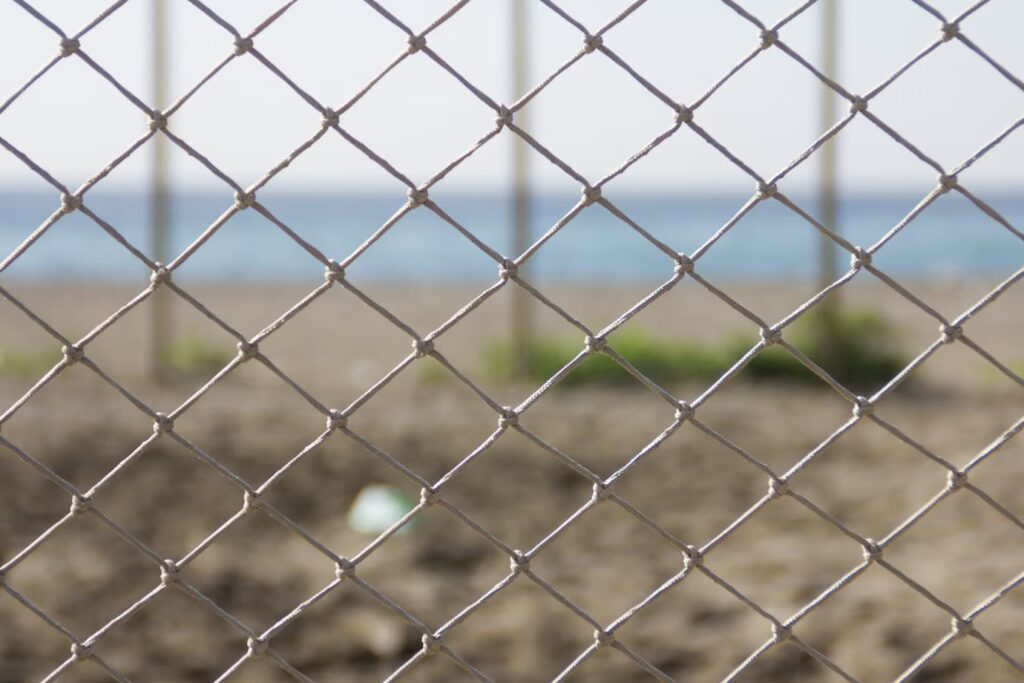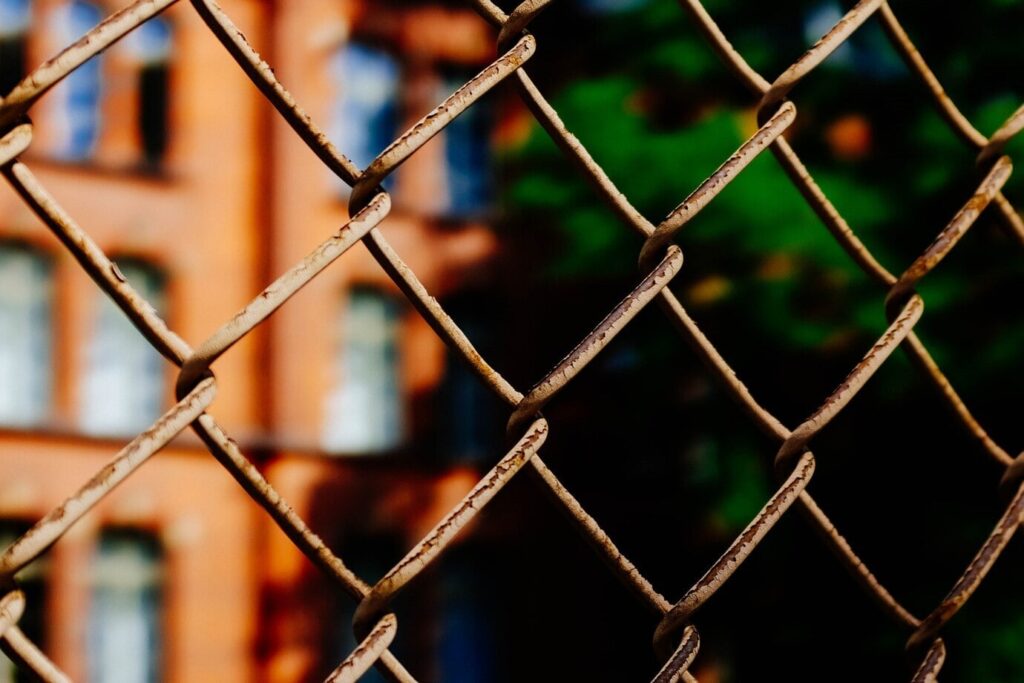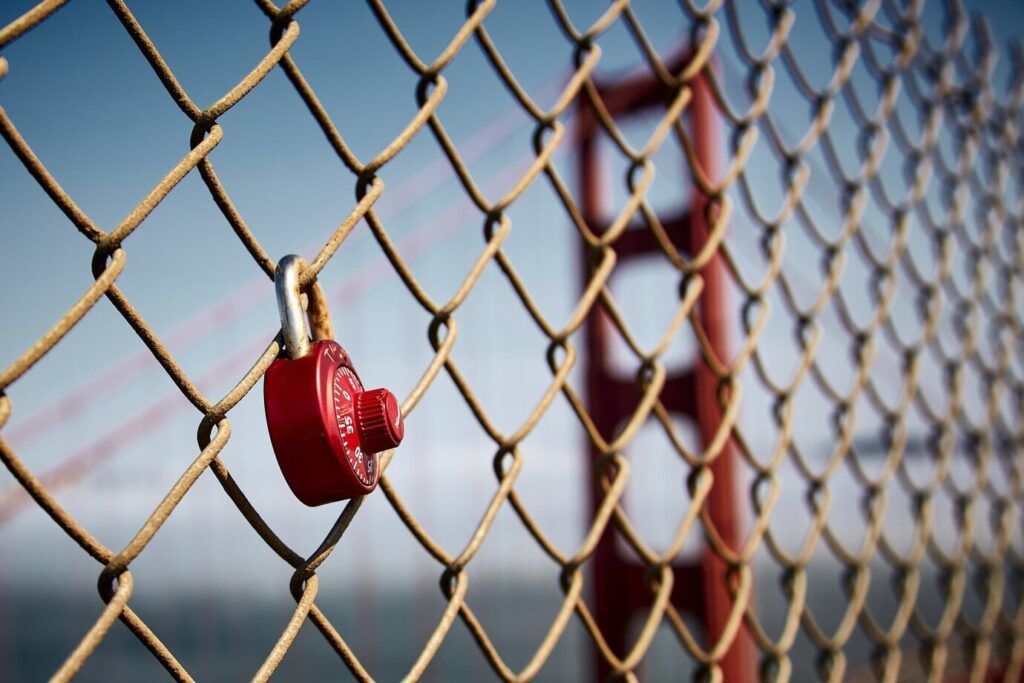- Free Estimates

Installing a chain link fence in Newtown, CT, can benefit your property. For one, it can increase your home’s security, create a boundary around your yard, or add a touch of aesthetic appeal to your outdoor space. Whatever your reasons may be, one thing is for sure: installing a chain link fence can be a challenging task, especially if you don’t have any prior experience.
But don’t worry, with the right guidance and tools, you can successfully install a chain link fence that meets your needs and exceeds your expectations. In this blog, we’ve partnered with expert fence installers in Newtown, CT, to share tips, tricks, and advice for installing a chain link fence.
A chain link fence is popular among Newtown, CT, homeowners due to its durability, affordability, and ease of installation. It is made of galvanized steel wires woven together to create a mesh, and the steel wire used in its construction is coated with zinc, which protects it from rust and corrosion, making it a low-maintenance and long-lasting option. If you’re interested in learning how to install chain link fence near you, you can hire professional fence installers in Newtown, CT, who can guide you through the process and ensure a successful installation.
If you need more confidence installing a chain link fence, consider contacting fence installers in Newtown, CT. They are experts in the field and will ensure that your fence is installed correctly and to your satisfaction.
A measuring tape is crucial for fence installers, especially when installing a chain link fence. It allows them to accurately measure the area where the fence will be installed, ensuring that it is properly aligned and fits the space.
A post-hole digger is used to dig holes for the fence posts. However, remember that the depth of the holes will depend on your local building code and the height of the fence, so make sure to measure carefully.
A shovel is necessary for digging and moving soil. You’ll use it to dig the holes for the fence posts and backfill them once they have been set.
A wrench or pliers are necessary for tightening bolts and nuts. These tools secure the end, corner, and gate posts to the fence posts.
A level is important for ensuring the fence posts are level and upright. This will ensure that your fence is straight and secure.
The posts that support the chain link fabric are the backbone of your fence. They come in various sizes and materials, so choose the right size and type for your installation.
The chain link fabric is the wire mesh that makes up the fence. It is available in various heights and gauges, so choose the right size for your needs.
Tension bars made of galvanized steel are installed at the top and bottom of a chain-link fence and are used to apply tension to the fence fabric. They ensure that the fence is tight and secure and prevent it from being loose and wobbly, which can make it less effective at keeping people and animals in or out of the area.

Tension bands are used to secure the fabric to the posts. They are available in various sizes and materials, so choose the right size and type for your installation.
A tensioning device is essential for fence installers when installing a chain link fence. It is used to properly tension the fence fabric, ensuring it is stretched tight and secure.
End, corner, and gate posts provide support at the fence’s ends, corners, and gates. They are typically heavier and thicker than the standard fence posts, so choose the right size and type for your installation.
Post caps protect the tops of the fence posts from water damage. They are available in various sizes and materials, so choose the right size and type for your installation.
A concrete mix is used to set the fence posts in place. It is available in various types and strengths, so choose the right type for your specific installation.
The first step in installing your chain link fence is to measure where you want the fence to go. This is an important step because it will help you determine how much chain link fabric and fence posts you’ll need. When measuring, be sure to take into account any curves or angles in the area where the fence will be installed. Then, write down your measurements to reference them later when purchasing materials.
Once you’ve measured the area, use spray paint or flags to mark the location of each post. This will help you track where the posts should go and ensure that you have the correct spacing between the posts.
The next step is to dig holes for the fence posts. Use a post-hole digger to dig the holes, making sure to follow the building code for your area for the correct depth of the holes. The depth of the holes will depend on the height of the fence, so make sure to measure carefully.
Once the holes have been dug, mix the concrete according to the manufacturer’s instructions and pour it into the holes around the fence posts. Ensure the posts are level and upright, using a level to ensure they are properly aligned. Allow the concrete to set and cure for at least 24 hours before proceeding to the next step.
It’s important to allow the concrete to cure for at least 24 hours before proceeding with the next step. This will ensure the posts are firmly in place and will not shift over time. During this time, you can prepare the rest of the materials and tools needed for the next step in the installation process. By following these steps and preparing the site properly, you’ll be able to ensure that your chain link fence is installed correctly by the fence installers in Newtown, CT. In addition, you will provide the privacy and security you’re looking for.
The first step in installing the chain link fabric is to unroll the fabric and lay it out along the fence line. Make sure the fabric is unrolled straight and is not tangled or twisted.
Once the fabric is unrolled, you can start attaching it to the posts. Use tension bands to secure the fabric to the posts. Ensure the tight and secure tension bands and the fabric is properly aligned with the posts.
The next step for fence installation in Newtown, CT, is to apply tension to the fabric. This can be achieved using a tensioning device that will tighten and secure the fabric. Proper tensioning will prevent sagging over time and ensure the fence is neat. It is important to hire professional fence installers in Newtown, CT, who has experience correctly tensioning the fabric to ensure the longevity and effectiveness of your fence.
Once the fabric is attached to the posts and tensioned, you can cut it to fit the area where you want the fence to go. Leave enough fabric to secure it to the end, corner, and gate posts.
Finally, use tension bands to secure the fabric to the ends, corners, and gate posts. Ensure the fabric is tight and secure, with no gaps or loose spots. By following these steps, you’ll be able to install the chain link fabric and have a fence that looks great and provides the privacy and security you need.
End posts are an essential component of a chain link fence and are installed at the ends of the fence line. They support the fabric and are the starting and ending points for the fence. install end posts, simply set them in concrete, ensuring they are level and upright.

Corner posts serve the same purpose as end posts but are installed at the corners of the fence line. They support the fabric and help keep it tight to prevent sagging. To install corner posts, simply set them in concrete and ensure they are level and upright.
Gate posts are essential for installing a gate on your chain link fence. They provide support for the gate and help keep it level and straight. To install gate posts, simply set them in concrete, ensuring they are level and the same height as the other posts.
Once the gate posts are installed, you can hang the gate by attaching hinges to the gate posts and gate. Make sure the gate is level and swings smoothly. If necessary, adjust the hinges to ensure that the gate opens and closes easily. With these steps, you’ll have a functioning gate that provides easy access to your yard.
Post caps serve a dual purpose in a chain link fence installation. Firstly, they protect the tops of the fence posts from water damage, which can cause rust and other corrosion over time. Secondly, they give the fence a finished look and a professional and polished appearance.
Regarding posting caps, there are several options, including flat caps, dome caps, and pyramid caps. Flat caps are the simplest and most basic option, providing a clean and minimalist look. Dome caps add a touch of style with their rounded shape, while pyramid caps are more decorative, featuring a pointed top that adds a touch of elegance to the fence.
Installing post caps is a quick and easy process for fence installers in Newtown, CT. Simply place the post cap on top of the fence post and secure it with screws or nails. Ensure the post cap is snug and secure to prevent it from falling off over time. With this step, you’ll have a fence that looks great and is protected from water damage.
Adding post caps to your chain link fence is an easy way to enhance its appearance and protect it from the elements. Choose the type of post cap that fits your style, and install it securely for the best results.
If you’re looking for reliable fence installers in Newtown, CT, you’ll want to make sure that you choose a team that pays attention to all the finishing touches, such as properly tensioning the fence fabric.
Here’s a step-by-step guide to how professional fence installers apply tension to the fabric during the installation process:
The first step in applying tension to the fence fabric is to use a fence stretcher bar. Slide the bar through the last link on the end of the fabric, near the terminal post. Secure the bar in place using tension bands and carriage bolts.
Next, attach a come-along or fence puller to the stretcher bar and the terminal post. This will provide leverage to apply tension to the fabric.
Slowly tighten the come-along or fence puller to stretch the fabric evenly between the terminal posts. Make sure to avoid overtightening, which can cause the fabric to tear or the posts to shift.
Once you’ve achieved the desired tension, attach the fabric to the terminal post using tension bands and carriage bolts. Finally, remove the come-along or fence puller.

Once your fence has been installed, you may need to trim the excess fabric to ensure that your fence looks neat and tidy.
Here’s what you need to know about trimming the excess fabric:
The first step in trimming the excess fabric is to identify the areas where the fabric extends beyond the terminal posts or is too long to attach properly. This excess fabric can make your fence look messy and unkempt, so it’s important to take the time to identify all of the areas that need to be trimmed.
Using fence pliers or a pair of heavy-duty wire cutters, carefully cut the excess fabric, ensuring that you maintain a clean, straight line along the fence’s edge. It’s important to use the proper tools to ensure that you don’t damage the fence fabric or any of the surrounding components.
After you’ve trimmed the excess fabric, be sure to collect and dispose of it properly. Depending on where you live, there may be local regulations that dictate the proper way to dispose of excess fencing material. In some areas, it may be necessary to take the material to a local landfill or recycling center.
When you hire fence installers in Newtown, CT, you want to make sure that they not only install the fence correctly but also clean up the site once the job is done.
Here are some tips on how to clean up the site after fence installation:
During the installation process, there may be leftover materials, such as cuttings from the fabric, tension bands, or other hardware. Make sure to gather all debris and place it in a designated area for disposal.
Properly disposing of waste materials is essential to ensuring the safety of your property and the environment. Check local regulations to determine the appropriate disposal methods for your specific materials. This may involve recycling some materials or taking them to a designated waste disposal site.
After the site has been cleaned up, take a walk around the perimeter of the fence to inspect all the components. Ensure that everything is securely in place and that there are no sharp edges or protruding wires that could pose a hazard.
If any landscaping or ground disturbance occurs during the installation process, take the time to restore the area to its original condition, such as by filling in holes, replanting grass or vegetation, or leveling the ground.
By following these steps, you can successfully install a chain link fence and ensure it’s both functional and aesthetically pleasing with the help of fence installers in Newtown, CT. Proper installation and finishing touches are essential for maintaining the durability and security of your fence over time.
Fence installers in Newtown, CT, recommend chain link fences as a durable, long-lasting option for homeowners. However, it is important to note that regular maintenance and upkeep are required to keep the fence looking its best. This can include tightening loose bolts, replacing damaged sections, and repainting the fence.
Installing a chain link fence can be a challenging task, but with the right guidance, tools, and professional fence installers in Newtown, CT, you can successfully install a fence that meets your needs and exceeds your expectations. By following the steps outlined in this blog, you can ensure that your fence is properly aligned, secure, and looks great. It’s also important to note that regular maintenance and upkeep are required to keep the fence in good condition.
If you’re looking at how to install a chain link fence in Newtown, CT, contact Newtown Fence Contractors, who can guide you through the process and ensure a successful installation. With a properly installed and maintained chain link fence, you can enhance the security, privacy, and aesthetic appeal of your property for years to come.